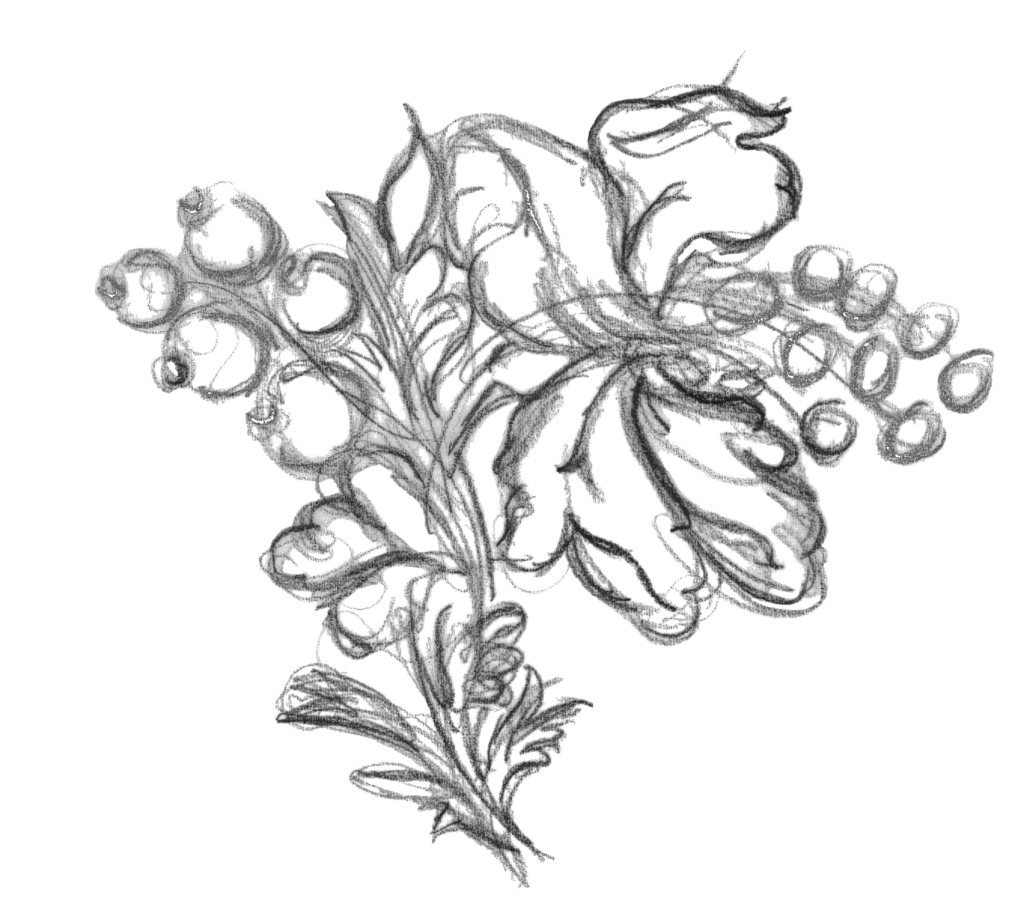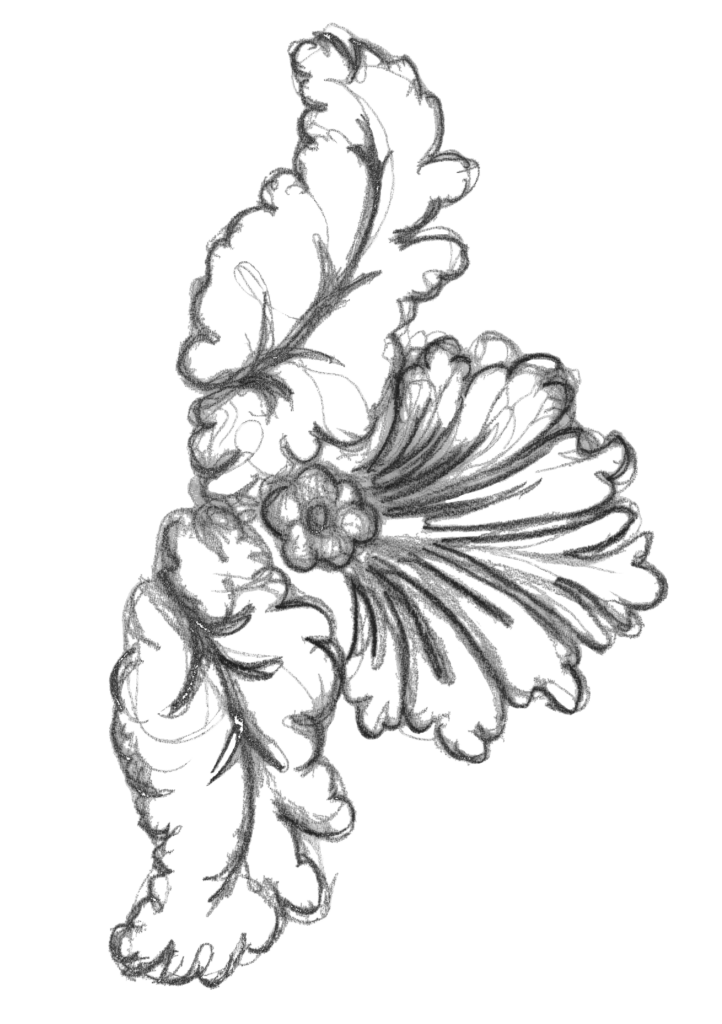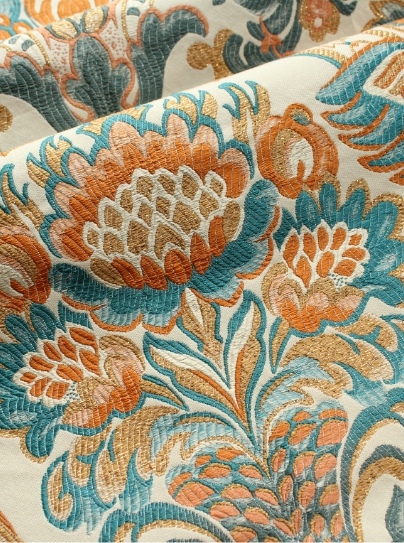Half Silks
The Half Silks of Sudbury; their proud origins in Norwich and their journey to the New World
“Half Silks: A term formerly used for a silk fabric in which the warp or filling is composed of a different fibre. The term has fallen into dis-use because of present trade rules call for the other fibre to be identified” – Dictionary of Textiles by Phyllis G. Torta and Robert S. Merkel.
The wool weaving, spinning, dyeing and finishing trades in East Anglia were the financial backbone of the region until the middle to late seventeenth century and has left an architectural and manufacturing footprint still visible today.
Many local towns and villages on the Essex and Suffolk border boast their great cathedral size churches due to the strength and success of the wool industry.
During the height of success, before the industrial revolution, most trades were controlled by ancient Guilds and Liveries, the weavers were no exception. The Worshipful Company of Weavers formed in the year of 1133 and by 1155 had been granted their royal charter. The weaving width of cloth was regulated and so were the weavers who made it. Masters would be limited to the numbers of journeymen and apprentices they were allowed to engage and would pay rent to the livery based on the number of looms they operated.
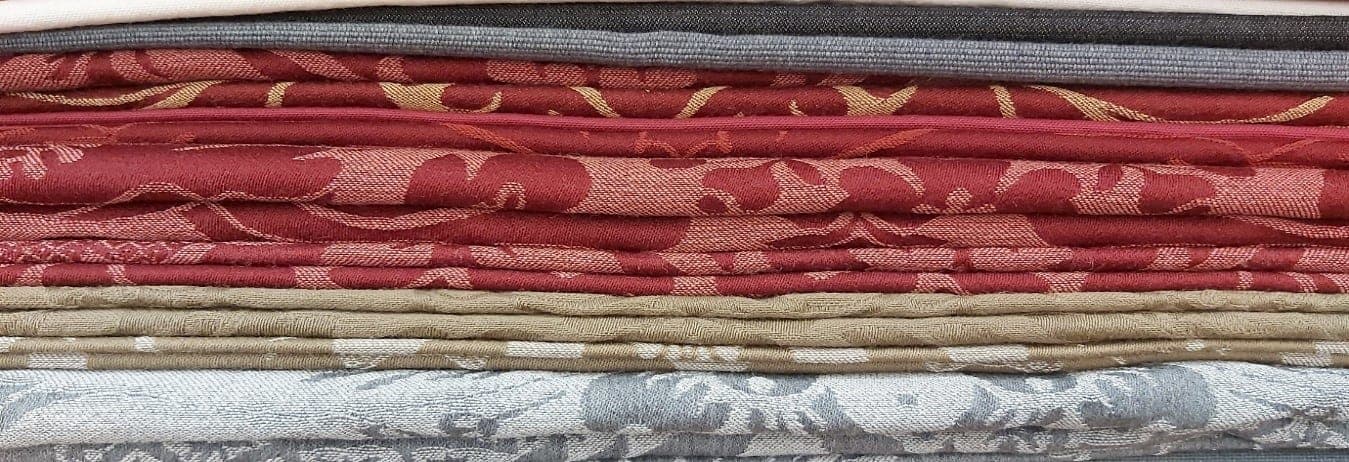
All Wool Damasks woven for Historic House restorations by Humphries Weaving, one of England’s leading custom jacquard weaving companies.
Locally made cloths often assumed names from the villages they derived from or techniques developed there. This is a tradition that Humphries Weaving still employs today with recent designs having names such as the Knodishall and Henny Damasks and the Barningham Strie. Most wool was sheered locally and hand spun in a cottage industry formed by many hundreds of hand spinners who supplied the demand of hand weavers located from London to the city of Norwich. Spinners in the town of Worsted discovered that they could spin finer and tighter yarns by combing the fibres, as well as carding them. Worsted yarn meant weavers could make more refined and stronger cloths in and around the city of Norwich. These fabrics have become known as Norwich Stuff.

Crimson Camlet and Green Tammy both woven by Humphries Weaving in 1995 for the Philadelphia Museum of Art – typical Norwich Stuff.
The Essex, Suffolk and Norwich weavers were to adapt later in the eighteenth Century, as their wool weaving business began to decline due to falling demand. The rise in demand for weaving more fashionable silk gave wool weavers here a chance to adapt their skills to prolong the cottage system well into the middle of the nineteenth century. By the end of the seventeenth century, Norwich was the centre for ‘half-silks’, fabrics made from a combination of silk and other fibres. By 1750 Norwich weavers produced a huge diversity of texture, weave and pattern using worsted yarns of very high quality, dyed in a range of bright colours. These fabrics had a variety of exotic names such as Tapizadoes, Taboretts, Camlets, Callimancoes, Bombazines and, most importantly, Damasks.

Left: Blue Silk/ Cotton Half Silk Stambourne Basket Damask woven by Humphries Weaving in 2008 for Morris-Jumel Mansion New York. Right: Crimson Silk/Wool Half Silk New Pavia woven by Humphries Weaving in 2008 for Gunston Hall Virginia.
In England half Silk Damasks reached the peak of their popularity in the early to mid-18th century. They were cheaper than all silk fabrics, gave a wonderful mix of textures and reflected the light in a unique way. However as opulent 100% silk fabrics became cheaper and more readily available (mainly due to the Huguenot weaver’s arrival in Spitalfields) the European markets moved away from half silks and all wools. The Norwich weavers, however, retained and built on a growing market in North America for all wool fabrics and in particular half silks. These remained popular in North America until the mid-19th century. This was partly driven by fashion and price, but they were also more appropriate for the colder winters in that part of the world. The American War of Independence caused immense damage to the weaving industry of East Anglia and particularly to Norwich. However, this soon recovered at the end of the war and Norwich became rich through the East India Company’s trading association with the New World. Fabric would either be shipped out of London or more directly from Kings Lynn.
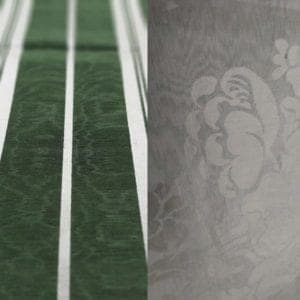
Left: Green Silk/Linen Moiré Taboret Stripe Half Silk woven by Humphries Weaving in 2002 for the Peabody Essex Museum Massachusetts. Right: Light Blue Silk/Linen Moiré Heddingham Half Silk Damask woven by Humphries Weaving in 2000 for the Museum of Fine Arts.
All of the remaining specialist silk weaving mills in England still weave in East Anglia and are all working from Sudbury, including Humphries Weaving. The ancient traditions of weaving have defined the growth of our organisation, the fabrics we make, and our vision for the future. We proudly retain our roots in traditional weaving processes and loom craft, as well as embracing evolving manufacturing techniques. We are still weaving many half silks such as Camlets, Bombazines, Taborets and Damasks. We custom dye and utilize stock colours of silk, cotton and wool warps with weft yarns of worsted, lamb’s wool, cotton, linen, flax and silk that is either custom dyed or from our extensive stock range.
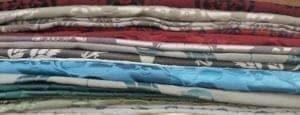
Half Silk Damasks – wool weft woven on a mixture of custom and stock silk warps by Humphries Weaving
For more information visit; www.humphriesweaving.co.uk
If you would like to read related articles to this article please follow these links:
The Secrets of the Norfolk Tissue
If you would like to read more information about the museums mentioned in this article please follow these links:
The Great Beds of Humphries – Part Two
